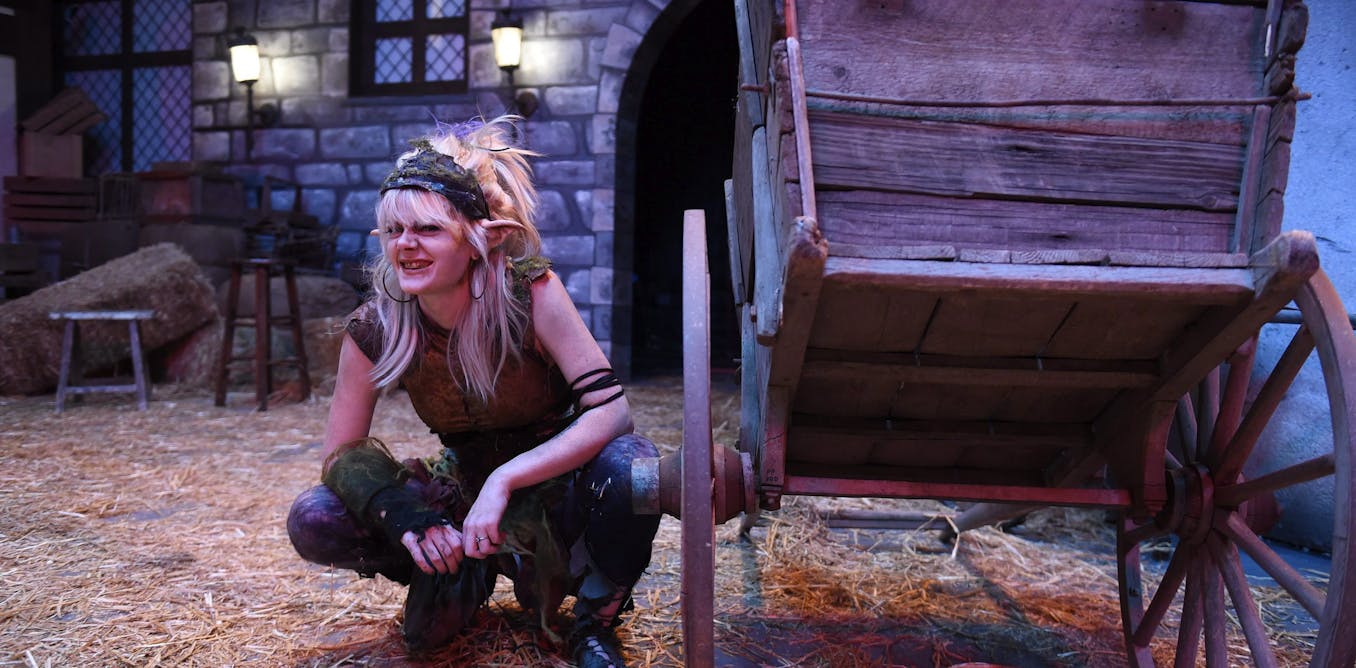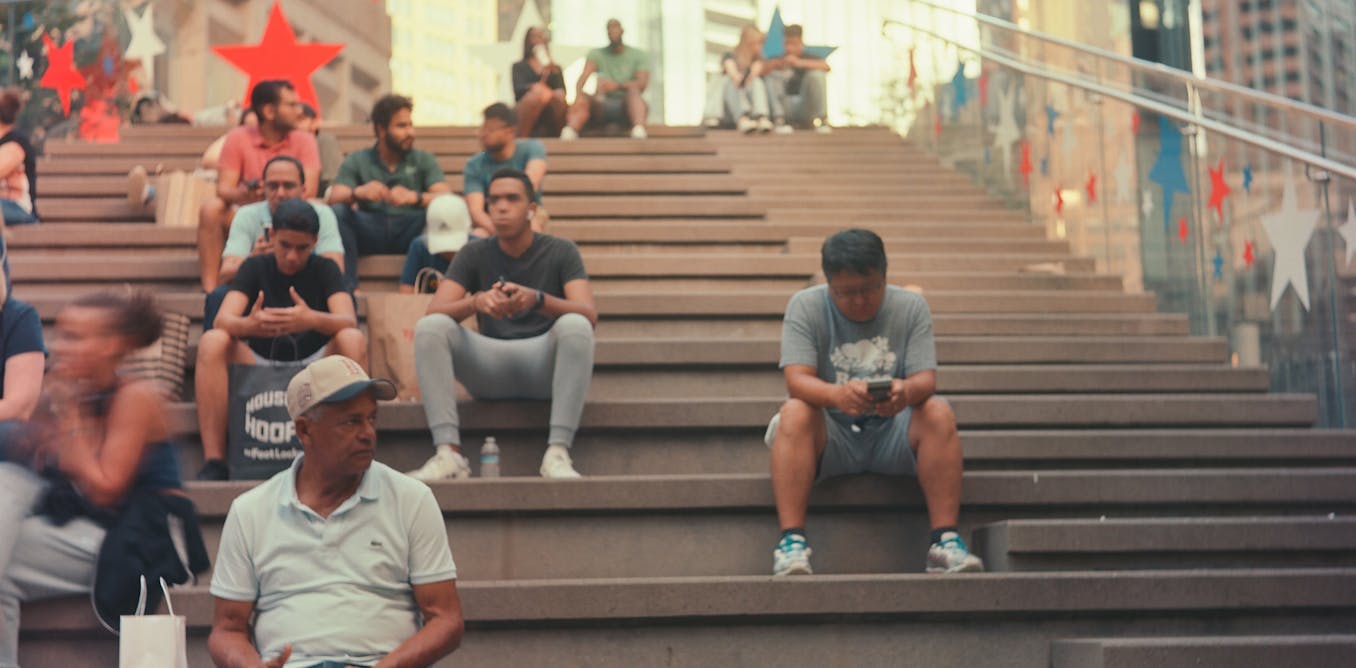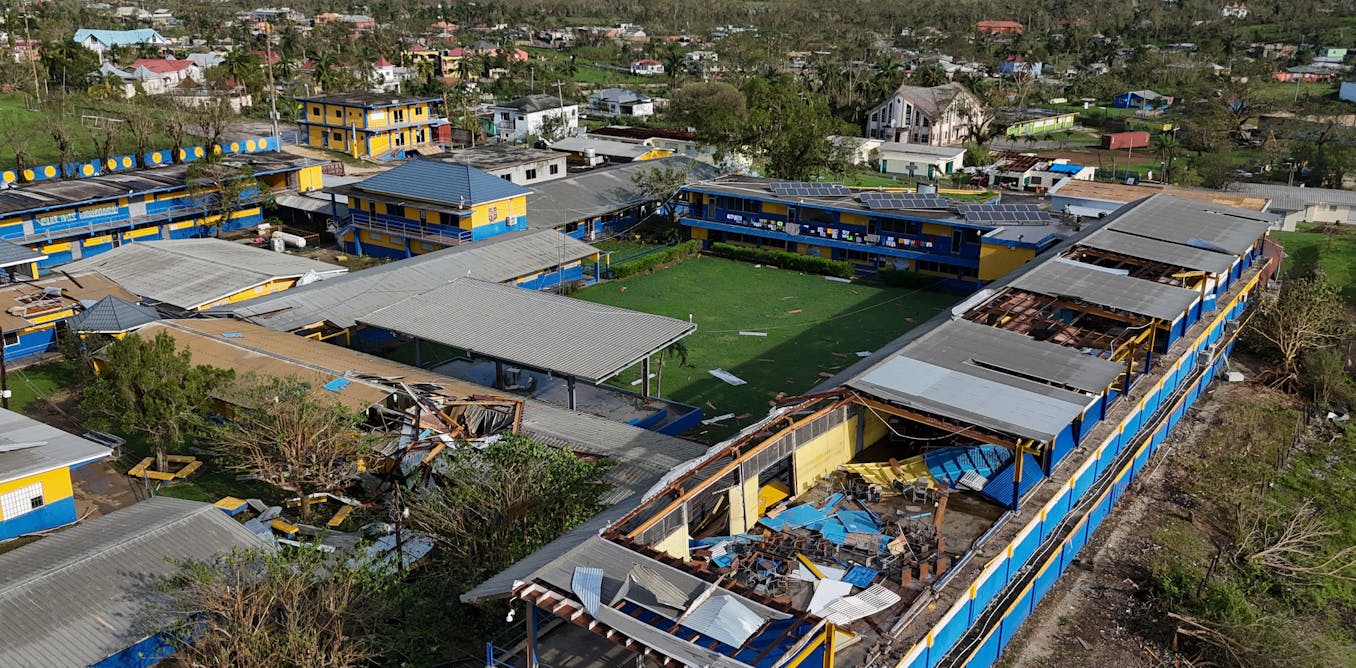Save the Wolves with Coyote Peterson!
…every few days. The lesson continues with a tutorial on the ins and outs of wolf enrichment, an essential part of caring for the center’s captive pack. From there, Nazir learns about the vital role that training plays in stewarding the safety and well-being of the wolves. As a grand finale to his whirlwind day at the center, Nazir accompanies Coyote to the spacious, outdoor wolf enclosures, where they have the opportunity to meet some of the ambassador wolves up close and personal. It’s an experience that will leave a lasting impression on Nazir and serve as a catalyst for his future as a conservationist. The episode wraps up with reflections and a call to action for viewers to get involved and become advocates for the preservation and protection of wolves and their habitats. Save the Wolves with Coyote Peterson is an inspiring, educational, and heartfelt adventure that is sure to leave a lasting impact on its audience.
Watch the video by Brave Wilderness
[musical flourish] I’m Coyote Peterson and it’s always been my belief that the future of conservation begins with the next generation of animal enthusiasts. That’s why each episode I’m taking kids just like you for the adventure of a lifetime. We’ll be going to some of the coolest locations,
where we will explore unique habitats and go behind the scenes at wildlife sanctuaries to get up close and personal with some of our planet’s most incredible species. Together, we’ll brave the elements, embrace the wild, and witness the unforgettable.
So, lace up your hiking boots and buckle your backpacks, because we’re about to embark on a wild field trip. [grand music playing] [Coyote] We have all been told: Never judge a book by its cover, but when it comes to the story of wolves,
judgement is exactly what these animals have faced. For over a century, the pages of their narrative had been hastily scribbled with misinformation, which, in turn, has led to a wrongful and undeserved villainous reputation. That reputation has since driven their kind
to the brink of extinction. Yet hope is on the horizon, as the Endangered Wolf Center is on a mission to rewrite the story and turn the page toward understanding how important these predators are to the balance of our planet.
I’m so excited to be working at the Endangered Wolf Center because they are on the front lines of wolf conservation. And today, we’re gonna learn from the experts what it takes to save some of our planet’s most endangered canid species.
Let’s meet up with Nazir and get to work. Joining me on today’s mission is Nazir Sall. He will be getting a hands-on lesson in daily canid care, and through the process of doing so, will help us all understand the passion at work it takes
to look after the center’s wild ambassadors. As a family, we’ve traveled extensively. And Nazir’s had some pretty wild experiences thus far. But for Coyote to give him the opportunity that I could have never given him, to have the exposure with endangered animals,
takes it up to a next level. So, we’re so thankful. [Coyote] Given the unique nature of today’s experience, Nazir and I will be working and learning from some of the Endangered Wolf Center’s leading experts, Stephanie, Regina, Danielle, and Sarah.
Collectively, these women are a dream team of wolf warriors, and their passion for steering the future course of canid history in a positive direction, goes unmatched. -What’s up, Nazir? -What’s up? How you been? -Good, man. How about you? -I’m doing good.
Awesome. Well, today’s gonna be extra exciting. You’re going to go through a crash course of everything that it takes to become a canid keeper. Now, when it comes to the world of wolves, you gotta start small. And small means foxes. [Nazir] I’ve never even seen a fox in the wild before.
[Coyote] Okay, well we’re gonna go up this hill here, meet with my friend Stephanie. She’s gonna tell us everything that we need to know. Nazir’s first animal interaction will be under the smiling. supervision of Stephanie. As the Director of Education,
Stephanie is well-versed in the center’s animal ambassadors. And nothing opens one’s heart to understanding canids like an adorable pair of foxes. We are just gonna take a seat right here and wait for this special animal. [Coyote] This is Nasir’s first encounter with a fox.
The smallest of all foxes, the fennec fox. I’m excited to be in the seat that I’m in today, because my experiences in the past with foxes are always complicated. But today, it’s Nazir’s chance to find out if he can connect with this canid
to work his way up the ladder for something quite a bit bigger. So, what is our best bet for getting Nazir to interact with these tiny foxes? Okay, so, the fennec foxes right now, looks like they’re chilling out. They need to make a new friend.
So, Nazir, I brought you some containers, and inside of this we have food. We have blueberries, blackberries, we have lettuce, and we have worms. This is their favorite diet because they’re an omnivore. They’ll eat anything, and once you get a little bit closer and she notices you, do a high-pitched voice
Where you’re like, “Hi, Daisy! Hi!” She loves that sound. And who knows, maybe you’ll become friends. I’ll make it happen. -Give it a shot. -All right. [Coyote] We’ll be watching. [Stephanie] We believe in you. [Coyote] You can do this. You’re doing good. Don’t look like a predator.
Look like a fox. Give a little–a little high-pitched “Hi, Daisy.” [Nazir in high-pitched voice] Hi, daisy! [playful music playing] [both] Ooh! [Coyote] Maybe hold out some of the food in your hand a little bit to show that you’ve got something to offer.
[Stephanie] Remember, you are her friend. Here she comes on this side. [Nazir makes kissing sounds] Daisy. -[Coyote] You got it. -[Stephanie] It takes time. Working with animals requires a lot of patience. [makes kissing sounds] Daisy. [Coyote] See right now, she’s thinking to herself,
“Okay, there’s a lot of people inside of my habitat. This is a little different. I smell some good stuff, but can I trust them?” [gentle music playing] [Coyote] Keep the container out front of you. [gasps] This is– It’s happening. -Okay. -[Stephanie] You did it. What? Wow.
There’s been a lot of time in between when we started filming the scene and this is it. Finally, Nazir has got the little fennec fox eating out of his hand. What does this feel like? Talk to us. [stammers] It’s incredible, absolutely incredible. [Stephanie] This is really cool.
[Coyote] So, obviously, the first thing that everybody is going to notice about this fox -is those ears. -Oh! [Coyote] Why the giant ears? [Stephanie] Oh, those giant ears obviously help with hearing. So that they can hear anything living underneath the sand.
So, you know, if there’s a bug under the sand or a scorpion, he’s gonna hear that, and dig down and get it. So, these foxes are incredible diggers. [Stephanie] Absolutely. Check out those claws. They might be tiny, but they, uh,
they have some nasty claws up there. And that fur, even though they live in a desert, the fur really helps them with the heat, -and when it gets cold at night. -Mm-hmm. So, when it comes to the desert, I’m thinking, alright, a mammal
existing in the desert, not a lot of water there. How are they getting hydrated? [Stephanie] They actually don’t need a lot of water to live. They could probably go a really long time, if not their whole life, without finding drinking water.
-However, they can absorb some of that water… -Wow. -…when they eat other types of desert plants. -Hmm. [Coyote] I mean, this literally just went from the fox having no trust in Nazir, to all of a sudden realizing, “Woah, this guy’s got a little container full of delicious treats.”
What is this experience like for you? I feel very connected. I feel like we’re brothers, you know? I feel like we’ve been together all along. This is a very, very, very exciting experience for me. Let me see this little dish. Are these fresh? [Stephanie] Yeah. Mmm. Pretty good. [Stephanie] Yeah.
[whispers] Now look at him. -Got one more. -[makes kissing sounds] And there he goes! Okay, well, I would say I’m convinced. Nazir, you have connected with a fox. And now that you’ve built the trust with the smallest canid, it’s time to go and meet the tallest. Let’s go.
[Coyote] I think we can all agree that Nazir earned the trust of those finicky foxes, officially making him one of the pack. It’s a great first step, but he has a long way to go. Now it’s time for him to learn
the slightly less glorious aspects of daily canid care. Under the guidance of Sarah and Danielle, two of the center’s top keepers, he starts off simple, helping to refill habitat water troughs. [playful music playing] [Coyote] Next up, is delivering daily scoops of food.
This high-protein mixture supplements the animals between larger feedings that come several times a week in the form of fresh meat. Last, but certainly not least, Nazir learns how to command the pooper scooper. A glorious task all canid keepers must learn to love
and eventually master. Oh, and trust me, cleaning up after the pack of African painted dogs was no easy chore. So with the basics under his belt, it’s time for Nazir to face his next challenge: ambassador enrichment.
Remember when we said we were going from smallest to tallest? Well, get ready to fall in love with Lucky, one of the center’s most celebrated animals. She is a maned wolf, and her species proudly stands as our planet’s tallest canid.
So, in preparation to meet this beautiful, long-legged, South American species, Nazir is helping to prepare her daily enrichment, which comes in the form of a delicious mouse-stuffed watermelon. It’s Lucky’s favorite summertime treat, but trust me, this is not something
you should ever bring to your family picnic. This is an unbelievably unique experience. Lucky is the only ambassador maned wolf in the entire world, and Nazir is the first kid to ever get to walk and interact with a maned wolf like this.
So, Regina, what do you think? Should we slowly approach to meet Lucky? [Regina] That sounds like a good plan. Why don’t you guys come and meet our special little Lucky? [Coyote] Alright, let’s move real slow. She’s beautiful. [Coyote] Lucky, look! You guys may put it down.
It’s watermelon mouse. [Regina] Nazir made that for you. It’s special watermelon just for you. [Coyote] Now, I know when you’re first looking at the maned wolf, you’re probably saying to yourself, “It looks a lot like red fox, only a lot bigger,” “but it’s called a ‘maned wolf’.”
“Which one is it, fox or wolf?” It’s actually neither. The maned wolf is very unique, its own genus and its own species. It is the largest canid in South America. Right now we have turned Nazir into the cinematographer.
I’ve got him with the camera in hand. He’s right down there with Lucky. Lucky seems to completely accept him, which is incredible. So he connected with the fox, and now he’s connecting with the maned wolf, and Nazir is actually the one in there
Getting the tight shots. This is gonna be awesome. You’re doing awesome, Nazir. Keep at it. There you go, there you go. Get the shot. Nice. -Regina, how’s he doing? -[Regina] He’s a natural. I mean, I’ve never seen somebody take to Lucky so quickly.
Nazir has quickly become one of her favorite people. [Coyote] In the wild, maned wolves are inherently elusive, doing their best to avoid human interaction. Nazir worked hard to establish his connection with Lucky, and, boy, was I proud of him. It took time and patience,
but in the end, I believe it was an experience he will never forget. The most important takeaway is it allowed him to recognize that maned wolves, even an ambassador like Lucky who is used to human interactions,
was cautiously timid in the presence of a stranger. This behavior only reaffirms that these animals are shy, gentle, and pose absolutely no threat to humans. So, Nazir you did an amazing job connecting with a fox. You did awesome with the maned wolf,
But now you’re going to face the ultimate challenge. Getting to feed wolves and not just any wolves, red wolves, the most endangered wolf species on the planet. Now, on the back of this vehicle here, we have a deer carcass. I’m gonna ask you to put on this pair of gloves.
-Now, you’ve done yard work before, right? -Yep. Let’s switch sides. Go ahead and grab ahold of that wheelbarrow. This is gonna be great. I’ve had to move a deer carcass before. They weigh about 150 pounds. You’ve been hitting the gym recently, right?
-Yeah, I’ve been hitting the gym. -Okay, cool. Looking strong. -I’m ready for it. Let’s do it. -Grab ahold, real gently. Slide it on in. Oof. Here we go. It’s heavy, right? -Yeah. -Oh, this is gonna be awesome. -Ooh! -There you go. You’re doing great. [Coyote] Without apex predators like wolves,
Ungulates such as deer and elk, overrun the environment. These large herbivores are eating machines, and will gorge on a wide variety of plants such as young tree saplings. Without a lush, healthy underworld of growth, smaller animal inhabitants begin to struggle.
And eventually, the forest becomes a barren dead zone, causing the natural balance of the ecosystem to be thrown completely out of whack. This doe was naturally sourced, and by providing its carcass to the pack, we not only provide necessary nourishment
in the form of fresh meat, but also allow the wolves to participate in important behavioral enrichment. But before the dinner table can be set, first we meet up with Regina. That’s some hard work right there. Look at that, 150 pounds of deer
Right to the front of the habitat. Well, thank you, guys, for bringing it. The wolves are gonna love it. Nazir, you have the important job of observing the wolves in our blind. Sound good? -[Nazir] Yes, sounds good. -Awesome. Coyote. You have the important job of delivering dinner.
[Coyote] Okay, I can do that. [Regina] You’re gonna be the red wolves’ favorite person. [Coyote] As the center’s director of animal care and conservation, Regina is a driving force behind the incredible rebound these once nearly extinct animals have made.
-Okay. -[Regina] You think this is a good spot for dinner? Yeah, we’d like to put it right up near this– -In between these trees, if that’s okay. -[Regina] Sounds good. -[Nazir] Hey, Mario. -[Mario] Hey, what’s up, Nazir? Ready to look at some wolves?
Yep, here we go. I see Coyote there and the carcass. He’s pulling it out. [grunts] Holy, this is cool. This is so cool. We are officially set. The carcass is in place. I’m gonna head back to the blind, hang out with Nazir.
We’re going to see some red wolves in action. Okay. -What do you think? -[Nazir] I think it was good. [Coyote] The wolves are definitely starting to take interest now that they realize we are not in the habitat.
It’s gonna take him a couple seconds to get fully acclimated, and then we’re gonna see something awesome. [Mario] We got him coming in. -[Coyote] This is it. -[Mario] First contact. Check it out guys. [Coyote] Oh, he’s taking a bite. Taking a nibble. Wolves have truly gotten their villainous reputation
Because of being wrongfully depicted in books, in television, in movies. Make ’em out to be a bad guy, that’s what people are going to think. And that’s why wolves have been pushed to the brink of extinction. Growing up, did you ever have any fear of wolves yourself?
Um, I definitely did. It was their–their structure. Like, they would run in packs, big fangs, and they would just attack big animals. So when you see these wolves out here interacting within their natural habitat, do they look scary to you?
[Nazir] No, they don’t look scary at all. They’re resting, waiting for their turn, they’re calm. They don’t look vicious at all. So, Coyote, why do we have to watch the wolves from a blind? [Coyote] Great question. So these wolves, specifically, are a family unit.
You’ve got two males and one female, and the hope is that eventually they breed and there’s pups. They want these wolves to remain as wild as possible. We don’t want them feeling as if eating in front of humans,
Or being in contact with humans is a part of normal life. If they have pups and those pups grow big, they will potentially be released back out into the wild. That is exactly how this population will rebound. In managed care wildlife centers
and zoos across the United States, there are approximately 250 red wolves remaining, and if you think that number is low, there are fewer than ten known red wolves left surviving in the wild, which makes these animals one of our planet’s
most critically endangered species. The stigma that wolves are ravenous, meat-eating machines has only added fuel to the fire of canid misrepresentation. In this family structure, the alpha acts as a responsible leader, investigating the deer carcass with hesitation,
because all wolves are naturally born with cautious instincts. And the precision with which the meal is sampled, nearly establishes these animals as having high-class table etiquette. One of the most fascinating behaviors we captured was this wolf’s curiosity
directed at the camera I set up. Almost like a playful pup, it gently investigated and even gently tasted the alien object. My, what big teeth you have, yet with a gentle touch that didn’t even scratch the camera.
How about that for an up-close wolf encounter? Over the course of nearly two hours, we quietly watched these wolves from a distance, and by doing so we were able to enjoy their beauty while also respecting the wild nature of their family unit.
This was the perfect conclusion to Nazir’s day of canid encounters. Nazir, to say that I am proud would be an understatement. The work that you put in today was incredible. You connected with the fox. You got up close with the maned wolf,
and then we fed the most endangered predator on our planet. What was your favorite part of the experience? Definitely, the most meaningful experience was hanging out with the maned wolf. I got to provide her with an enrichment. I even got to walk her.
That was definitely wild. [Coyote] It was so cool. Earning the trust of an animal like that is very difficult. And now, everybody out there watching understands exactly what it takes to provide conservation and protection for these incredible canids. The biggest threats wild canids face include humans, habitat loss,
and global climate change, all of which happen to be interlinked to one another. The Endangered Wolf Center’s hopeful vision sees a world where these animals can exist and thrive in their natural habitats while being valued for the vital role they play
as leaders of a healthy ecosystem. The red wolf specifically is as close to a living phantom as any critically endangered animal you could ever dream of encountering in the United States. And for both myself and Nazir,
the chance to witness their natural behavior was an honor we will forever cherish. Stories of the past established wild canids as monsters in the minds of millions, but with leading conservation efforts, like those celebrated here today, a new generation, your generation,
will have the power to write a new story for the future of these animals. I encourage you to do research and get involved with the conservation effort that protects the packs of tomorrow.
If you have love for wolves, now is the time to howl. I’m Coyote Peterson. I’m Nazir Sall. -Be brave. -Stay wild. We’ll see you on the next Wild Field Trip. [both howl] [grand music playing]
About Brave Wilderness
The Brave Wilderness Channel is your one stop connection to a wild world of adventure and amazing up close animal encounters!
Video “Save the Wolves with Coyote Peterson!” was uploaded on 01/08/2022 to Youtube Channel Brave Wilderness


































